Building a villa in a tropical climate is an exciting but challenging endeavor. The appeal of living in a lush, warm environment is undeniable, but the reality of the intense heat, high humidity, and frequent tropical storms means that every material used in the construction must be chosen with care. Your villa isn’t just a home—it’s a sanctuary that needs to offer both comfort and protection against the forces of nature. The materials you select will directly impact the longevity, durability, and overall energy efficiency of your villa, ensuring it remains resilient in the face of unpredictable weather while providing a serene, beautiful living space.
Choosing the right materials for tropical homes is more than just a technical decision; it’s about creating a villa that blends functionality with aesthetics. The right materials should protect you from the harsh humidityand heat, while also withstanding the pounding of tropical storms and ensuring that your villa remains a place of comfort and elegance. With the right approach, your villa can offer both luxurious living and the peace of mind that it will endure the elements. In this article, we’ll explore the best humidity-resistant building materials and storm-resistant solutions for a villa that stands strong against the tropical environment.
Key Characteristics of Ideal Materials for a Tropical Climate
When constructing a villa in a tropical climate, choosing the right building materials is essential to ensure the structure can withstand the region’s challenging environmental conditions. Tropical climates are characterized by intense heat, high humidity, and frequent tropical storms, all of which place unique demands on the materials used in construction. Understanding the key qualities these materials must possess is crucial to building a villa that is both durable and comfortable. In this context, the materials you select must excel in the following areas:
Heat Resistance
In tropical regions, temperatures can soar, especially during the hottest months of the year. The materials used for your villa must have excellent heat resistance. This means they should either reflect or absorb minimal heat to help maintain a cooler indoor temperature. Materials like concrete, stone, and metal roofing are particularly effective in these environments. By reflecting the sun’s heat, these materials reduce the need for constant air conditioning, which lowers energy consumption and helps keep the indoor environment comfortable.
Additionally, incorporating shading devices such as overhangs or pergolas can complement heat-resistant materials, blocking direct sunlight and further improving the villa’s ability to remain cool during peak sun hours.
Humidity Resistance
High humidity is one of the defining characteristics of a tropical climate, and this constant moisture can be highly damaging to certain building materials. Humidity-resistant materials are essential to prevent problems, and rot, which are common in tropical environments. Materials like tropical hardwoods (e.g., teak and mahogany), concrete, and treated metal are ideal for humidity resistance. These materials naturally repel moisture and are less prone to deterioration caused by constant exposure to humid conditions.
Tropical hardwoods, for instance, are known for their ability to endure in wet environments, making them a great choice for exterior features like decking or cladding. Meanwhile, concrete, when properly sealed, offers a robust barrier against moisture, ensuring the villa’s structural integrity remains intact despite the humid air. Additionally, using moisture-resistant coatings on exposed surfaces like roofs and walls can further enhance the durability of these materials, protecting them from mold and mildew over time.
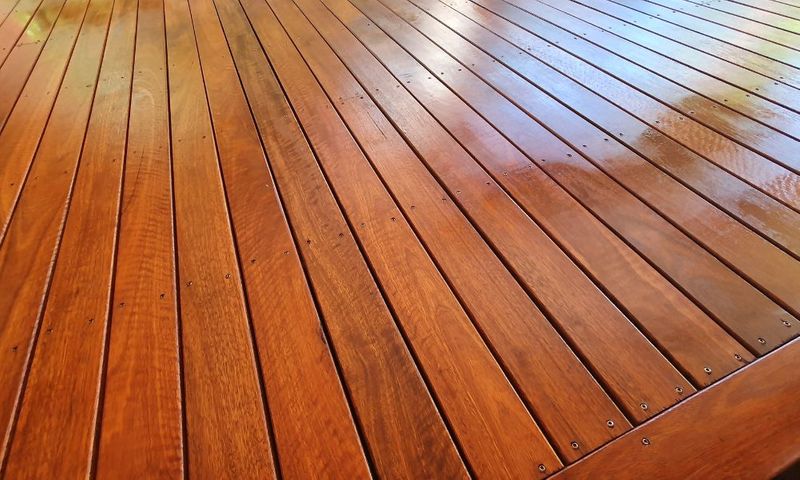
Durability Against Storms
Tropical regions are frequently affected by severe weather, including strong winds, heavy rains, and even tropical storms or hurricanes. Therefore, the materials chosen for your villa must be highly durable and capable of withstanding the extreme forces of nature. Storm-resistant materials such as reinforced concrete, stone, and metal roofing are ideal for withstanding both wind and water pressure.
Reinforced concrete, in particular, provides excellent structural support and can endure high wind speeds without cracking or breaking. It is commonly used for foundations, walls, and support structures in areas prone to tropical storms. Metal roofing, especially aluminum or steel, offers superior protection against wind upliftand is designed to resist corrosion even in humid and salty coastal environments. These materials ensure that your villa remains standing and secure even in the face of the most severe tropical weather conditions.
Sustainability
Given the environmental sensitivity of tropical regions, it’s increasingly important to select sustainable and eco-friendly materials. These regions often feature delicate ecosystems that can be easily disrupted by traditional construction methods. By choosing sustainable materials like bamboo, recycled steel, or locally sourced stone, you not only reduce the environmental impact of your villa’s construction but also contribute to resource conservation.
Bamboo, for instance, is a fast-growing renewable resource that has become popular in tropical architecture for its strength, flexibility, and sustainability. When harvested and treated properly, bamboo can be used for both structural elements and decorative features, offering a lightweight yet durable alternative to traditional materials. Similarly, using locally sourced materials reduces the carbon footprint associated with transportation and supports the local economy.
In addition, incorporating green building practices—such as using materials that improve energy efficiency, water conservation systems, and natural ventilation—can further enhance the sustainability of your villa. Materials that promote energy conservation, such as insulated concrete or eco-friendly roofing, help maintain a more energy-efficient home, reducing the overall need for heating or cooling systems, thus minimizing your villa’s environmental footprint.
The success of building a villa in a tropical climate depends on selecting the right materials that can endure the region’s intense heat, humidity, and occasional tropical storms. Prioritizing materials that offer heat resistance, humidity protection, durability, and sustainability is key to ensuring that your villa remains both functional and comfortable for years to come. By choosing the best humidity-resistant building materials and eco-friendly options, you can create a resilient and beautiful tropical home that stands strong in the face of the climate’s challenges.
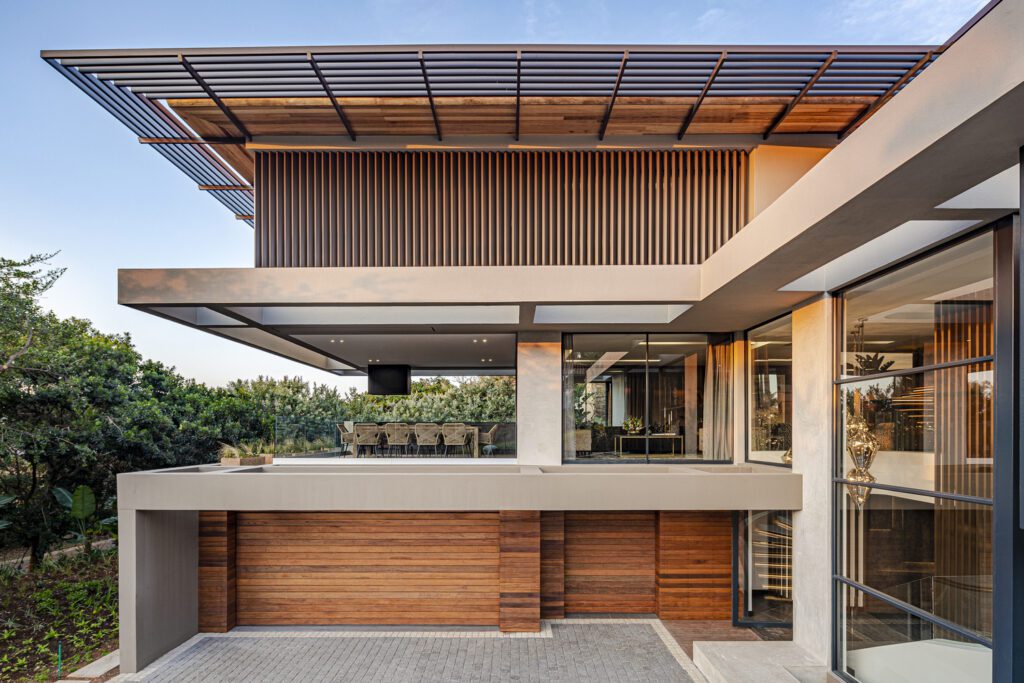
Concrete: A Durable and Versatile Choice
When it comes to building a villa in a tropical climate, concrete stands out as one of the most reliable and durable materials available. Its inherent strength, versatility, and ability to withstand the elements make it an excellent choice for homes in regions that experience humidity, heat, and tropical storms. As a humidity-resistant building material, concrete excels in environments where moisture is a constant concern, offering long-term protection and structural integrity.
Moisture and Storm Resistance
One of the key reasons concrete is so widely used in tropical climates is its impressive resistance to moisture. Unlike materials that may warp, rot, or weaken when exposed to high levels of humidity, concreteremains strong and unaffected by the frequent rainfall typical in these regions. Its non-porous nature means that it does not absorb water easily, protecting the villa from the damaging effects of constant moisture exposure. This makes concrete especially suitable for areas prone to tropical storms or heavy downpours, where rainwater can erode or damage less resilient materials.
In addition to its moisture resistance, concrete can also endure the harsh conditions brought on by tropical storms. When reinforced with steel, reinforced concrete becomes even more capable of withstanding the strong winds that often accompany these storms. This combination of materials ensures that your villa remains structurally sound, even in the face of powerful winds and the destructive force of hurricanes or typhoons. The added reinforcement also helps to prevent cracks and fractures, which can occur when buildings are exposed to severe weather over time.
Thermal Properties of Concrete
Beyond its durability, concrete also offers significant advantages in terms of thermal regulation, a critical factor in tropical climates where heat can be intense. One of the unique properties of concrete is its ability to absorb and store heat during the day and then release it slowly during cooler periods, such as the evening or night. This thermal mass effect helps to regulate the indoor temperature of the villa, reducing the need for constant use of air conditioning to maintain a comfortable environment.
However, while concrete is excellent at storing heat, it can also become a source of excess warmth if not managed properly. In a tropical climate, it is crucial to balance the heat-retaining properties of concrete with effective insulation and ventilation. Installing insulation within concrete walls ensures that the building doesn’t become overheated during the day. Proper ventilation, such as strategically placed windows or cross-ventilation, helps dissipate the stored heat and keeps the air flowing, further enhancing the energy efficiencyof the villa.
Customizability and Aesthetic Flexibility
In addition to its functional benefits, concrete is an incredibly versatile and customizable material, allowing for a wide range of architectural designs. Its ability to be molded into various shapes gives architects the freedom to experiment with modern aesthetics, ensuring that the villa is not only durable but also visually appealing. Whether you’re looking for sleek, minimalist lines or more complex, sculptural forms, concrete can be adapted to meet your design preferences.
For example, concrete can be finished with different textures or coatings to create unique visual effects. From smooth, polished surfaces to rough, natural finishes, concrete offers a broad spectrum of possibilities for both interior and exterior applications. This flexibility allows homeowners to enjoy a villa that is not only built to last but also aesthetically tailored to fit their vision. Whether it’s for structural support, facades, or outdoor elements like patios and driveways, concrete provides endless design opportunities while remaining steadfast in its durability.
Sustainability and Long-Term Benefits
One of the often-overlooked advantages of concrete is its contribution to sustainability in tropical climates. Because of its longevity and low maintenance requirements, concrete is considered an eco-friendly option over the long term. Unlike wood or other materials that may need frequent repairs or replacement due to the effects of humidity or storm damage, concrete structures tend to last much longer without significant deterioration. This reduces the need for ongoing resources to repair or replace parts of the building, making concrete a more sustainable choice in tropical regions.
Moreover, the energy efficiency provided by concrete’s thermal properties can lead to a reduction in the villa’s overall energy consumption. By naturally maintaining a cooler indoor environment, the villa requires less energy to cool, which translates into lower electricity bills and a reduced carbon footprint. When paired with green building practices, such as incorporating solar panels or natural ventilation, a concrete villa can become a model of sustainable tropical architecture.
Concrete is, without a doubt, one of the best materials for building a villa in a tropical climate. Its durability, resistance to humidity and storms, as well as its excellent thermal properties, make it an ideal choice for long-lasting, comfortable, and energy-efficient homes. Additionally, the customizability of concrete allows for modern, elegant designs that blend seamlessly with the villa’s tropical surroundings. By incorporating concrete into your villa’s construction, you’re investing in a material that will not only stand the test of time but also help create a sustainable and beautiful living environment.
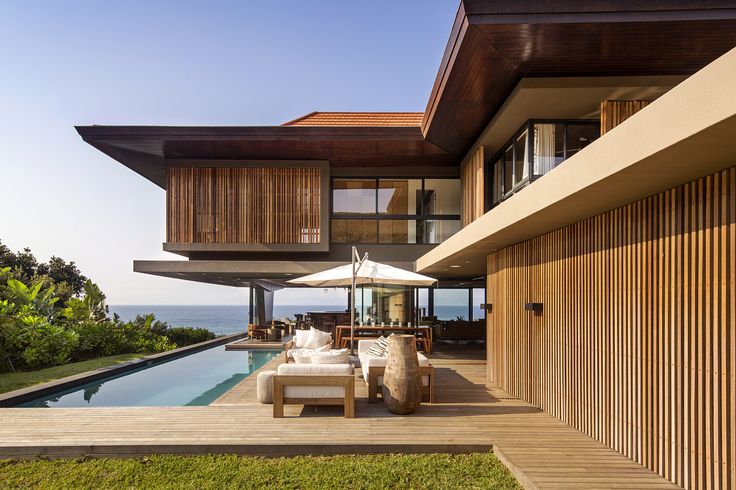
Wood: Selecting the Right Type for Tropical Climates
While wood may seem like an impractical choice for building in tropical climates due to high humidity, certain types of tropical hardwood are exceptionally well-suited for these environments. These woods are naturally resistant to the challenges posed by moisture, rot, and pests, making them ideal for both structural elements and decorative features in tropical villa construction. Choosing the right kind of wood is crucial to ensure that your villa remains durable, beautiful, and in harmony with the surrounding environment.
Tropical Hardwoods: The Best Choices
Some of the most popular types of tropical hardwoods include teak, mahogany, and ipe. These woods are highly regarded for their durability, resistance to environmental challenges, and their natural ability to thrive in humid conditions.
• Teak: Often considered the gold standard of tropical woods, teak is renowned for its ability to withstand humidity without warping, cracking, or rotting. This is thanks to the wood’s high oil content, which naturally repels moisture and protects it from the growth of mold and fungi. Additionally, the oils in teak make it resistant to common pests like termites and other wood-boring insects, ensuring that it maintains its structural integrity over time. Teak is commonly used for outdoor elements such as decks, pergolas, and furniture, as well as for interior flooring and cabinetry. Its beautiful, rich finish adds a sense of luxury and warmth to any tropical villa.
• Mahogany: Another excellent choice for tropical villas, mahogany is known for its strength and stability. Like teak, mahogany is naturally resistant to rot, moisture, and termites, making it perfect for both indoor and outdoor applications. Its deep, reddish-brown hue brings a classic elegance to villa interiors, while its durability ensures that it can withstand the challenges of a tropical climate. Mahogany is commonly used in door frames, window frames, and flooring, as well as in the construction of outdoor features like gazebos and cladding.
• Ipe: Known as one of the hardest woods in the world, ipe is incredibly strong and has a natural resistance to humidity and insects. Its density makes it nearly impervious to water, meaning it is an ideal choice for outdoor spaces that are exposed to heavy rainfall and humidity. In addition to being water-resistant, ipe is highly durable and can last for decades without significant maintenance, making it a favorite for outdoor decks, boardwalks, and fences. Ipe’s dark brown color and fine grain provide a sophisticated aesthetic that complements both traditional and modern architectural designs.
Maintaining Wood in Tropical Climates
While tropical hardwoods are naturally durable and resistant to the challenges of humidity and heat, it is essential to treat these woods with high-quality sealants and finishes to protect them from the intense tropical sun and ensure their longevity. Proper maintenance includes applying UV-resistant sealers to prevent the wood from fading and treating the surface with water-resistant finishes to further enhance its resistance to moisture. This regular upkeep will ensure that the structural elements and decorative features of your tropical villa continue to perform well and retain their beauty over time.
Incorporating wood into your tropical villa design adds a warm, natural aesthetic that harmonizes with the lush environment. The natural grains and colors of tropical hardwoods can create a seamless blend between indoor and outdoor living spaces, enhancing the villa’s overall charm and providing a sense of connection to nature, all while ensuring durability and resilience in harsh climates.
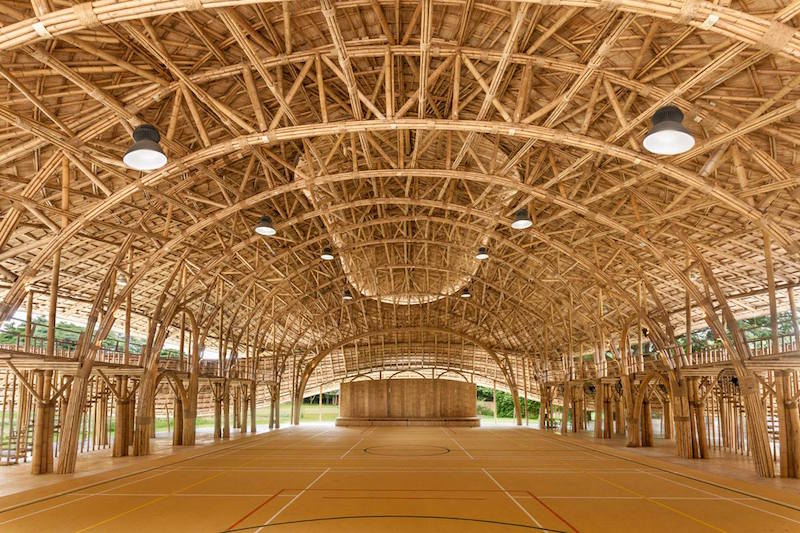
Bamboo: A Sustainable and Resilient Option
For homeowners seeking a more sustainable and eco-friendly material in tropical villa construction, bamboois an excellent choice. As a rapidly renewable resource, bamboo grows quickly and can be harvested without causing long-term damage to the environment, making it one of the most sustainable building materials available today. In addition to its environmental benefits, bamboo is highly adaptable to the tropical climate and offers a range of functional and aesthetic advantages.
Moisture and Insect Resistance
Despite its appearance as a lightweight material, bamboo is naturally resistant to moisture and insects, making it ideal for construction in humid environments. Properly treated bamboo can withstand the high humidity levels found in tropical climates without suffering from warping, rot, or mold growth. Additionally, bamboo’s resistance to common pests, such as termites, ensures that it remains structurally sound over time, even when used in outdoor settings.
Flexibility and Resilience in Storms
One of the unique properties of bamboo is its flexibility, which allows it to bend rather than break in the face of strong winds and tropical storms. This resilience makes it an excellent material for structural components, particularly in areas prone to extreme weather conditions. Bamboo’s ability to absorb and distribute the energy from wind and seismic activity makes it especially valuable in storm-resistant construction.
Bamboo’s lightweight nature also contributes to its resilience in tropical climates. It reduces the overall stress on the building’s foundation, making it easier and faster to construct villas while also minimizing the carbon footprint of the construction process. Despite its lightness, bamboo is surprisingly strong and can support significant loads, making it suitable for everything from walls and roofs to furniture and decorative elements.
Aesthetic and Sustainable Benefits
Incorporating bamboo into your tropical villa adds a unique natural beauty that complements the tropical landscape. Its pale color and smooth texture offer a modern yet earthy feel, blending effortlessly with other natural materials such as stone or tropical hardwoods. Bamboo can be used in a variety of ways, from flooring and ceiling panels to furniture and decorative features, giving your villa a cohesive, sustainable aesthetic.
Moreover, bamboo is one of the most sustainable building materials available due to its rapid growth cycle. It can be harvested and replenished much faster than traditional hardwoods, making it a key material for those seeking to reduce their environmental impact. When treated and installed correctly, bamboo can last for decades, offering both an eco-friendly and visually appealing alternative to more conventional building materials.
Wood and bamboo are two excellent choices for building a villa in a tropical climate, provided that you select the right type of materials and apply proper treatments. Tropical hardwoods like teak, mahogany, and ipeprovide a combination of natural beauty and resilience, while bamboo offers a sustainable and flexible solution that thrives in humid conditions. Incorporating these humidity-resistant building materials into your villa’s design ensures both durability and aesthetic appeal, creating a home that not only withstands the challenges of a tropical environment but also reflects the natural beauty of its surroundings.
For more insights on choosing eco-friendly materials that can withstand tropical conditions, visit the Sustainable Building Materials in Tropical Climates section on the World Green Building Council’s website.
Stone: Strength and Timeless Beauty
When constructing a villa in a tropical climate, natural stone emerges as one of the most durable and elegant materials available. Stones such as granite, limestone, and basalt possess natural properties that make them highly resistant to the intense heat, humidity, and tropical storms typical of these regions. Their ability to withstand the elements, coupled with their timeless beauty, makes them an excellent choice for homeowners seeking both strength and aesthetic appeal in their tropical villas.
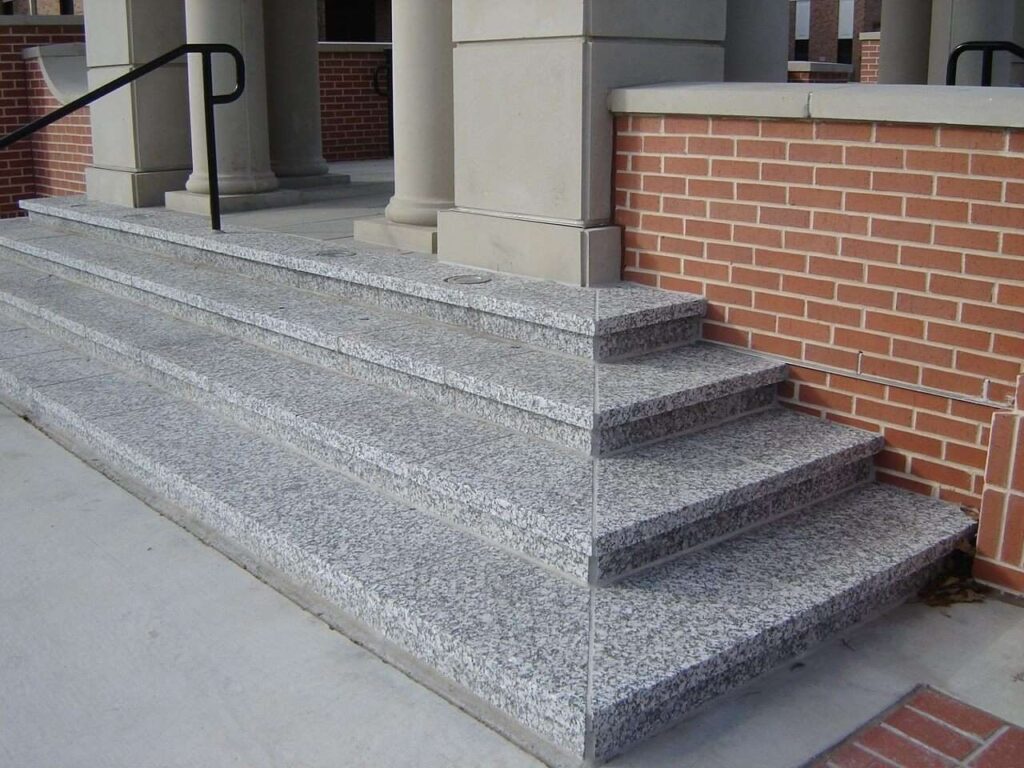
Granite: The Epitome of Durability
Among the various types of natural stone, granite stands out as one of the most durable options for building in tropical climates. Granite is known for its high resistance to water and heat, two major concerns in tropical regions. Its non-porous surface ensures that water cannot easily penetrate the stone, preventing issues like mold or structural damage from long-term exposure to humidity or heavy rainfall. This makes granite ideal for both interior and exterior applications, whether as flooring, countertops, or facades.
In terms of heat resistance, granite has the ability to endure extreme temperatures without cracking or warping, maintaining its structural integrity throughout the year. It also reflects heat more effectively than materials like concrete, helping to keep both outdoor and indoor spaces cooler. This makes granite an excellent choice for patios, walls, and other external features that are exposed to direct sunlight for long periods.
Granite’s durability is further enhanced by its natural resistance to wear and tear. Whether exposed to wind, rain, or high humidity, granite’s solid structure ensures that it remains intact for decades, reducing the need for frequent repairs or replacements. In addition to its strength, granite is highly valued for its aesthetic versatility, offering a wide range of colors and patterns that can be customized to suit various design styles.
Limestone and Basalt: Natural Elegance and Versatility
Limestone and basalt are two other natural stones that are well-suited for tropical villa construction. Both materials are known for their ability to withstand harsh environmental conditions while adding a sense of natural elegance to the villa’s design.
• Limestone: Often used for facades and interior flooring, limestone offers a soft, earthy aesthetic that blends beautifully with tropical surroundings. Its lighter color palette reflects sunlight, keeping surfaces cooler during the hottest months. While limestone is slightly more porous than granite, it remains a strong and durable material when properly sealed. This helps to protect it from the effects of moisture and ensures that it resists the growth of mold or mildew. Additionally, limestone’s natural texture and appearance make it an attractive choice for outdoor pathways, pool decks, and other decorative features.
• Basalt: Known for its dark, rich color and fine grain, basalt is another excellent choice for tropical climates. Basalt is incredibly strong and dense, making it highly resistant to erosion, water absorption, and the effects of constant humidity. Its durability and low maintenance needs make it ideal for external cladding, walls, and flooring. Additionally, basalt’s unique aesthetic—characterized by its dark tones—creates a striking contrast with lighter architectural elements, offering a modern and sophisticated look.
Thermal Regulation and Temperature Control
One of the standout benefits of using stone in tropical villa construction is its ability to regulate indoor temperatures. Unlike concrete, which tends to absorb and retain heat, natural stone such as granite and limestone has lower thermal conductivity. This means that stone absorbs less heat, helping to keep indoor spaces cooler even during the hottest parts of the day.
Longevity and Minimal Maintenance
Beyond its aesthetic appeal and functional benefits, one of the most significant advantages of using stone in tropical climates is its remarkable longevity. Natural stone is highly resistant to wear and degradation, ensuring that your villa remains structurally sound for decades with minimal upkeep. In tropical regions where humidity, heat, and heavy rains are constant threats, the low-maintenance nature of stone becomes a significant advantage. Unlike other materials that may warp, crack, or deteriorate over time, natural stone remains virtually unaffected by these environmental factors.
Routine maintenance of stone surfaces generally involves periodic cleaning and sealing to preserve their appearance and protect them from moisture. With proper care, stone surfaces can retain their beauty and functionality for many years, making them a wise investment for tropical villa construction.
Aesthetic Versatility: Creating Timeless Beauty
In addition to its strength and durability, natural stone offers unparalleled versatility in design. Whether you’re aiming for a modern minimalist aesthetic or a more traditional, earthy look, stone can be adapted to suit your vision. Granite, limestone, and basalt can be used in various architectural features, from sleek, polished countertops to rustic outdoor walls, creating a timeless appeal that blends seamlessly with the surrounding tropical landscape.
The use of stone facades can add a sense of grandeur and permanence to your villa’s exterior, while stone flooring provides a durable and elegant solution for both indoor and outdoor spaces. Whether used for landscaping, pathways, or even water features, natural stone adds texture and visual interest to the villa’s overall design, enhancing both its aesthetic value and functionality.
Natural stone is an exceptional choice for building a villa in a tropical climate, offering a unique combination of strength, durability, and timeless beauty. Stones like granite, limestone, and basalt not only withstand the challenges of humidity, heat, and storms but also provide excellent temperature regulation, helping to keep your villa cool and comfortable throughout the year. With minimal maintenance and a long lifespan, stone is a sustainable and visually striking option that enhances both the aesthetic and functional aspects of your tropical villa. Incorporating natural stone into your villa’s design ensures that it remains a sanctuary of beauty and resilience, perfectly suited to its tropical surroundings.
Metal Roofing: Protection Against Tropical Storms
In tropical climates, where intense weather conditions such as heavy rain, strong winds, and tropical storms are common, the choice of roofing material is critical to ensure the longevity and safety of your villa. Metal roofing, especially when made from aluminum or steel, provides one of the most reliable solutions for roofing in these harsh environments. The inherent durability of metal makes it an ideal choice for tropical regions, offering superior protection against the elements while maintaining a sleek and modern appearance.
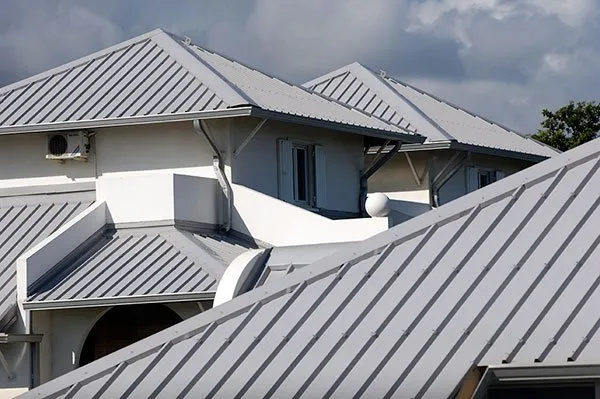
Durability and Storm Resistance
The primary advantage of metal roofing in tropical climates is its ability to withstand the extreme forces of nature, especially during tropical storms and hurricanes. Aluminum and steel roofing materials are engineered to resist high wind speeds, ensuring that the roof stays intact even during the most severe weather events. These metals are also designed to handle heavy rain, with proper drainage systems preventing water buildup that could otherwise lead to leaks or structural damage. Given that tropical regions often experience intense rainfall in short bursts, the quick water-shedding ability of metal roofs helps protect the villa’s overall structure.
Furthermore, metal roofing materials can be coated with protective finishes that enhance their ability to withstand the corrosive effects of constant humidity and salt air in coastal tropical environments. These protective coatings prevent rusting, extending the lifespan of the roof and ensuring it remains resistant to moisture over time. Aluminum, in particular, is highly corrosion-resistant, making it an excellent choice for villas located near the coast, where exposure to saltwater can accelerate the deterioration of traditional roofing materials.
Energy Efficiency and Heat Reflection
Another significant benefit of metal roofing is its ability to reflect solar radiation, contributing to the energy efficiency of the villa. In tropical climates, where the sun’s intensity can lead to excessive heat buildup in the home, metal roofs help to reduce heat absorption by reflecting a significant portion of the sun’s rays. This reflective property keeps the interior of the villa cooler, minimizing the need for energy-intensive air conditioning systems. By lowering the overall temperature of the building, metal roofing helps reduce energy consumption and utility costs, making it an environmentally friendly option for tropical villa construction.
Aluminum roofing, in particular, is known for its lightweight nature, making it easy to install without adding undue stress to the structure of the villa. Its lightness, combined with its corrosion resistance, makes it a low-maintenance option, reducing the need for frequent repairs or replacements. Additionally, steel roofingprovides excellent fire resistance, which can be an added safety feature in tropical regions prone to lightning strikes and other weather-related hazards.
With proper installation and maintenance, metal roofs can last several decades, offering both long-term durability and protection. This makes metal roofing an excellent investment for homeowners seeking a storm-resistant and low-maintenance solution for their tropical villas.
Tile Roofing: Aesthetic and Functional Benefits
For those who prefer a more traditional and aesthetically pleasing roofing option, tile roofing made from clayor concrete offers both beauty and functionality in tropical climates. Tile roofs have been used for centuries in warm, humid environments due to their excellent ability to handle high humidity, rainfall, and extreme temperatures. Their durability and classic appearance make them a popular choice for tropical architecture, providing both practical benefits and timeless visual appeal.
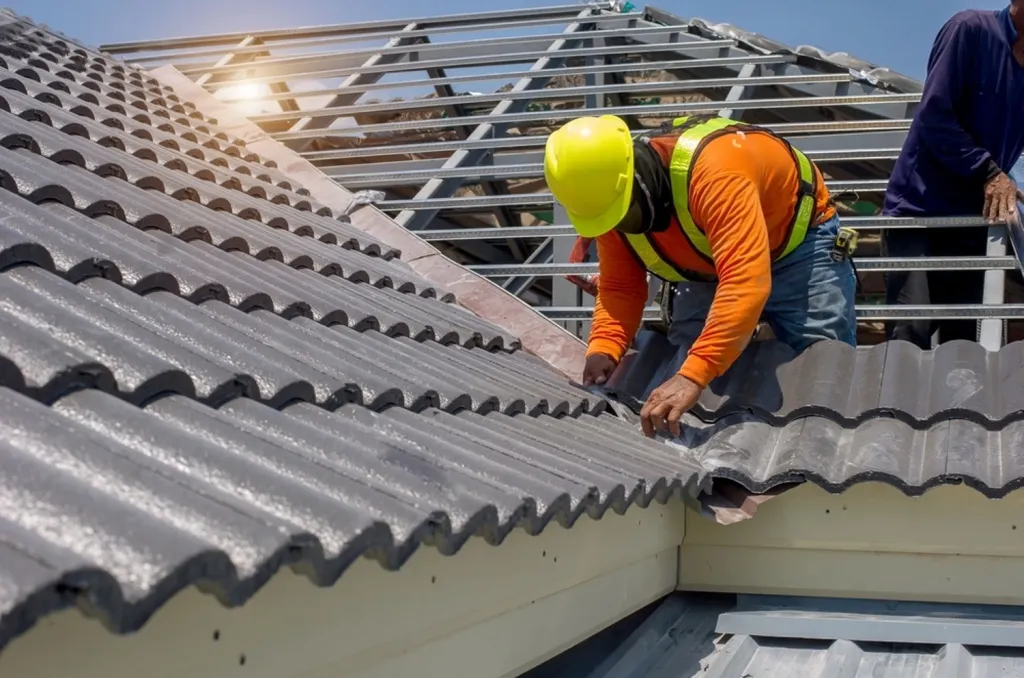
Humidity and Storm Resistance
One of the key advantages of tile roofing is its ability to withstand high levels of humidity and rainfall. Clayand concrete tiles are naturally resistant to water absorption, which means they won’t swell, warp, or rot even after prolonged exposure to moisture. This makes tile roofs particularly effective in tropical regions, where humidity and rain are persistent throughout the year. Moreover, their interlocking design helps prevent water infiltration, providing an additional layer of protection against leaks during heavy rains.
Tile roofs are also highly durable and capable of withstanding strong winds and stormy conditions. Concrete tiles, in particular, are designed to be heavier and sturdier, making them less susceptible to being dislodged during tropical storms or hurricanes. The weight of concrete and clay tiles ensures that the roof remains stable, even in high-wind areas, while still offering excellent thermal performance.
Thermal Insulation and Energy Efficiency
Tile roofing is not only durable but also provides excellent thermal insulation for tropical villas. The natural properties of clay and concrete tiles allow them to create a cooling effect, as they absorb less heat than other roofing materials. This means that tile roofs can help regulate the temperature inside the villa, keeping it cooler during the day and reducing the need for air conditioning. This energy-efficient quality is particularly important in tropical climates, where maintaining a comfortable indoor environment without relying heavily on artificial cooling systems is essential.
The insulating properties of tile roofing also contribute to the overall energy efficiency of the villa, helping homeowners save on energy costs while enjoying a cooler living space. Additionally, tile roofs can last for decades with minimal maintenance, providing a long-term solution for both aesthetics and functionality.
Aesthetic Appeal: Complementing Tropical Architecture
Beyond its practical benefits, tile roofing offers significant aesthetic value, particularly for villas designed in tropical architectural styles. Clay tiles provide a natural, earthy aesthetic that blends seamlessly with lush tropical landscapes, enhancing the villa’s connection to its surroundings. The warm, terracotta hues of clay tiles are particularly well-suited to Mediterranean or Spanish-style villas, creating a harmonious blend of form and function.
Concrete tiles offer more flexibility in terms of color and design, allowing homeowners to choose from a wide variety of finishes that complement both modern and traditional architectural styles. The versatility of concrete tiles enables them to be used in a range of tropical villa designs, from minimalist, contemporary aesthetics to more rustic, traditional homes.
In addition to their visual appeal, clay and concrete tiles are also resistant to mold, rot, and fire, making them a smart choice for homeowners looking for a low-maintenance, long-lasting roofing solution. With proper care and periodic maintenance, tile roofs can last for up to 50 years, providing both functional protection and timeless beauty to any tropical villa.
Insulation and Ventilation: Critical for Tropical Villas
Effective insulation is vital in a tropical villa to help regulate indoor temperatures. Without proper insulation, the villa can quickly become uncomfortably warm during the day due to heat buildup, leading to excessive reliance on air conditioning. However, with the right insulation materials, you can create a thermal barrier that prevents heat from penetrating the villa’s walls and roof, keeping the interior cooler and reducing the need for mechanical cooling systems.
Spray foam insulation and fiberglass insulation are two popular options used in tropical climates for their high thermal resistance and ability to combat humidity. Spray foam is particularly effective because it forms an airtight seal that blocks moisture and prevents heat transfer, ensuring that your villa remains cool even on the hottest days. Additionally, fiberglass insulation is known for its durability and resistance to moisture, making it a great choice for tropical environments prone to high humidity and frequent rainfall.
By using insulation materials with high R-values (a measure of thermal resistance), you can significantly reduce the villa’s energy consumption. Not only does this lead to lower electricity bills, but it also minimizes the villa’s environmental footprint, aligning with the principles of sustainable construction. Moreover, proper insulation helps retain cooler air during the night, improving indoor comfort and making the villa more energy-efficient overall.
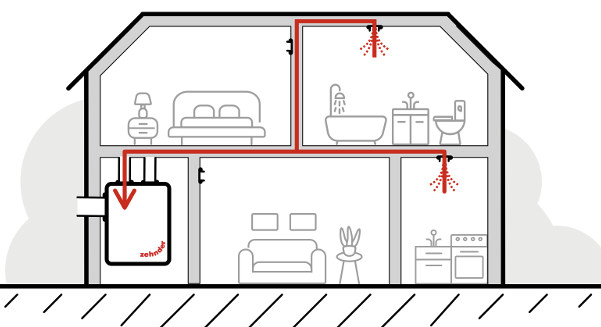
Ventilation: Ensuring Fresh Air Circulation
While insulation is critical for temperature regulation, an equally important aspect of villa design in a tropical climate is a well-thought-out ventilation system. Cross-ventilation is one of the most effective ways to keep air moving through the villa, ensuring a steady flow of fresh air while removing hot, stale air from the interior. By strategically placing windows and openings on opposite sides of rooms or along key airflow corridors, you can take advantage of the natural wind patterns common in tropical regions.
The goal of cross-ventilation is to create a continuous exchange of air, allowing cooler outdoor breezes to enter the villa and flush out warm air, reducing indoor temperatures without relying on air conditioning. Large windows, louvered shutters, or open floor plans can all facilitate this natural ventilation process, improving air quality and creating a more pleasant living environment. Not only does this enhance comfort, but it also cuts down on energy use, making your tropical villa more energy efficient and eco-friendly.
In addition to cross-ventilation, incorporating ventilation systems such as ceiling fans, roof vents, and clerestory windows can help optimize airflow and prevent heat buildup in areas prone to overheating, such as attics or high-ceilinged rooms. These systems allow hot air to escape while drawing in cooler air, further enhancing the villa’s energy efficiency.
By balancing insulation and ventilation, you can create a tropical villa that remains cool and comfortable year-round without relying on energy-intensive cooling systems. This approach not only improves thermal comfort but also aligns with sustainable building practices, reducing the villa’s overall energy consumption.
Conclusion
Building a villa in a tropical climate requires a careful selection of materials and design elements that can withstand the intense heat, humidity, and risk of tropical storms. From the strength and durability of concrete to the natural beauty of tropical hardwoods and the eco-friendly appeal of bamboo, each material choice plays a crucial role in ensuring the villa’s longevity and comfort. Incorporating humidity-resistant building materials, efficient insulation, and strategic ventilation systems will not only protect your villa from the harsh elements of the tropics but also create an energy-efficient and sustainable living space.
By selecting materials and design solutions that address the specific challenges of the tropical environment, you can build a villa that is not only beautiful and functional but also built to last.
